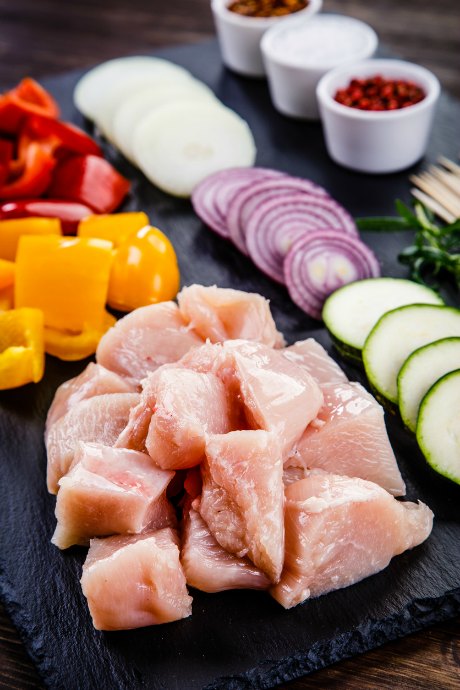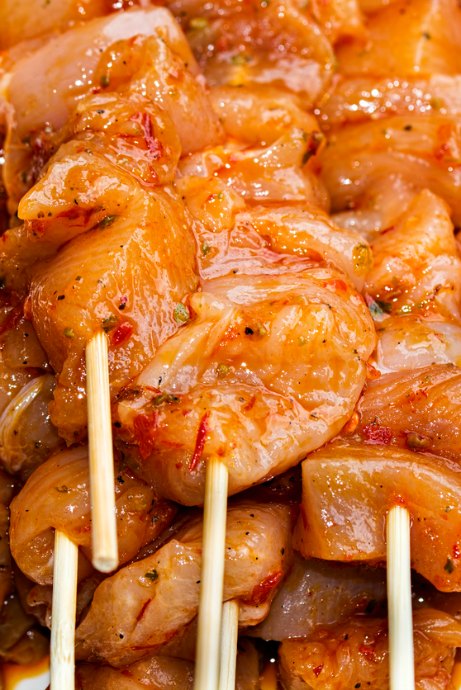Skewers Make Everything Taste Delicious
Posted by Julie on Jun 21st 2018
Grilling is one of the hallmarks of summer, from Memorial Day to Labor Day, and every day in between. One of our favorite ways to grill is with skewers. Whether you call them kabobs, kebabs, shish kebabs, or skewers, meats and veggies taste even better when they’re on a stick.
Make your skewers the best they can be with these tips and tricks we’ve gathered. We hope this post will inspire you to get outside and get cooking.
Best Meats and Veggies for Skewers
Last summer, we covered the various cuts of beef and which ones are best-suited for dry heat, like grilling. Both Serious Eats and Beef Loving Texans vote for sirloin as a top contender for skewers. Other good options include strip steaks and flat iron steaks. Bon Appetit even suggests boneless short ribs. Choose the cut you prefer, or do as we usually do and pick what’s on special.
Pork is another good choice. Serious Eats opts for boneless pork chops, but they recommend brining beforehand to prevent drying. On the other hand, Bon Appetit calls out pork shoulder, which should stay nice and juicy.

Chicken is a classic, but all of our sources agreed on this point: Avoid chicken breasts, and go for boneless, skinless chicken thighs instead. More fat means they can handle the heat without drying out.
If you’re feeling more adventurous, try lamb shoulder, leg of lamb, or seafood like shrimp and hearty fish steaks.
As for produce, we’re on board with the guidance from Serious Eats: Pick vegetables and fruits that go well with your meats and your marinade. Of course, it’s crucial that you can slide them onto a stick too.
How to Prepare Meat and Veggies for Skewering
It’s natural to think of skewering cubes of meat and veggies. However, cubes are just one way to prep ingredients. Depending on what you’re grilling, you may want to try different techniques. Some cuts of meat are better suited to long strips. Fold them over once, or thread them onto the skewer like it’s a needle. All of our sources recommend cubing meat into chunks at least one inch square. This size will help meat stay juicy and prevent overcooking. Cut vegetables and fruits into similar sized chunks so they cook evenly along with the meat.

Regardless of how you slice and dice your meat and veggies, all of our sources recommend a marinade to add flavor. Take care not to marinate for too long though; acidic ingredients will alter the texture of the meat, actually making it tougher.
How to Prepare Skewers for Grilling
The next step depends on whether you have metal skewers or wooden ones. Bon Appetit and Food and Wine both advocate for metal, which is sturdy, reusable, and don’t need special preparation. Bamboo can be tossed after use, but it must be soaked in water before grilling to ensure it doesn’t catch fire. We do love this tip offered by Bon Appetit: Soak a whole pack in advance, then freeze them to use later. Either way, flat skewers are better than round, because they hold ingredients in place and don’t allow them to rotate.
How tightly should you pack your meat and veggies? Guidance is mixed on this point. Serious Eats prefers to have cubes and slices touching to prevent overcooking and drying out. Beef Loving Texans suggests a quarter-inch between items so heat can circulate and food cooks more evenly. We suggest finding a happy medium between squeezing the maximum amount food onto one skewer, and getting out a ruler to ensure each chunk is perfectly spaced.

Another big question is whether you should segregate ingredients. Food and Wine acknowledges that skewering ingredients separately helps with cooking time, but mixing them up will blend the flavors. The key seems to be keeping heartier foods separated from more delicate foods that cook faster. Of course, it also helps to ensure items are similarly sized so they cook at the same rate.
Grilling Tips and Techniques for Skewers
Across the board, our sources agree that two zones are necessary to grill skewers. One side should have all the coals for high direct heat, and the other side should be empty. You’ll start grilling on the high heat side, then move to the side with indirect heat to let your skewers cook through without burning. This strategy also helps more food finish at the same time, so everyone can start eating sooner.
 Free shipping over $49
Free shipping over $49










